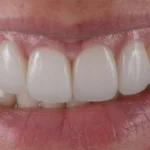Composite Fillings

#1How much does Tooth Filling Cost without Insurance?
The cost of a tooth filling without insurance can vary widely depending on several factors, including the type of filling material used, the location of the dental practice, and the complexity of the procedure.
- Amalgam Fillings (Silver Fillings): These are typically one of the least expensive options and can cost anywhere from $50 to $150 per filling.
- Composite Fillings (Tooth-Colored Fillings): Composite fillings are generally more aesthetically pleasing but can be more expensive, ranging from $100 to $250 or more per filling.
- Gold Fillings: Gold fillings are among the most durable, but they are also the most costly. Prices can range from $250 to $4,500 per filling or more, depending on the size and complexity.
- Ceramic Fillings (Inlays/Onlays): These are custom-made in a dental lab and are often more expensive than other options. Costs can range from $250 to $4,500 or more.
It’s important to note that these are rough estimates, and actual costs can vary.
#2Differences Between Dental filling types and composite fillings?
Composite Fillings
- Esthetics: Offers natural tooth color options.
- Tooth Preparation: Requires less removal of tooth structure.
- Toxic Substance Content: Contains no toxic substances.
- Durability: Suitable for small to medium-sized cavities.
- Cost: Typically more cost-effective than porcelain.
- Repairability: Easily repairable.
- Color Changes: May experience color changes over time.
- Application Time: Quick application.
Amalgam Fillings
- Esthetics: Grey-metallic color, aesthetically less desirable.
- Tooth Preparation: May require more removal of tooth structure.
- Toxic Substance Content: Contains mercury, but in safe levels in modern formulations.
- Durability: Can be more durable for large fillings.
- Cost: Can be an economical option.
- Repairability: Generally repairable, but may involve more tooth removal.
- Color Changes: Less likely to experience color changes.
- Application Time: Faster application.
Porcelain Fillings
- Esthetics: Offers natural tooth color options.
- Tooth Preparation: Requires tooth preparation.
- Toxic Substance Content: Contains no toxic substances.
- Durability: Generally long-lasting and durable.
- Cost: Can be more expensive.
- Repairability: More challenging to repair.
- Color Changes: Color changes are rare.
- Application Time: May require more time and effort.
#3What is a Composite Filling?
A composite filling, also known as a tooth-colored or white filling, is a dental restoration used to repair teeth that have been damaged by decay or trauma.
Composite fillings are called “composite” because they are composed of a mixture of different materials. The main components of a composite filling are a tooth-colored resin (a type of plastic) and finely ground glass particles.
Here’s how the process of placing a composite tooth filling typically works:
- Preparation: The dentist starts by removing the decayed or damaged portion of the tooth. This leaves behind a clean and cavity-shaped space that needs to be filled.
- Bonding Agent: Before placing the composite material, the dentist applies a bonding agent to the prepared tooth. This helps the composite material adhere securely to the tooth structure.
- Layering: The dentist then applies the composite resin in layers, using a special light to cure or harden each layer. This layering process allows the dentist to shape and sculpt the filling to match the natural contours of the tooth.
- Shaping and Polishing: Once all the layers are in place and properly shaped, the dentist polishes the filling to make it smooth and aesthetically pleasing. This step also ensures that the filling doesn’t interfere with the patient’s bite.
#4What are the Advantages of Composite Fillings?
- Aesthetics: They can be color-matched to the natural shade of the patient’s teeth, making them virtually indistinguishable from the surrounding tooth structure. This makes them an excellent choice for visible teeth, such as those in the front of the mouth.
- Conservation of Tooth Structure: Composite dental fillings require less removal of healthy tooth structure compared to some other types of fillings, like amalgam (silver) fillings.
- Bonding Strength: The bonding process used with composite fillings can enhance the overall strength of the tooth and reduce the risk of further damage.
However, composite fillings also have some limitations
- Durability: While composite fillings are suitable for small to medium-sized cavities, they may not be as durable as some other materials for very large restorations.
- Cost: They can be more expensive than amalgam fillings and may not be fully covered by some dental insurance plans.
Overall, the choice of filling material depends on various factors, including the size and location of the cavity, the patient’s aesthetic preferences, and their budget.
A dentist will consider these factors when recommending the most appropriate type of filling for a particular situation.
#5How long to wait to eat after Composite Filling?
You can typically eat and drink immediately after getting a composite filling.
Unlike some other dental procedures, composite dental fillings harden (cure) almost instantly when exposed to a special curing light used by your dentist.
This means that once you leave the dental office, the composite filling is fully set and you can resume eating and drinking as you normally would. However, some dentists may ask you to refrain from eating and drinking for 2 hours after composite filling.






